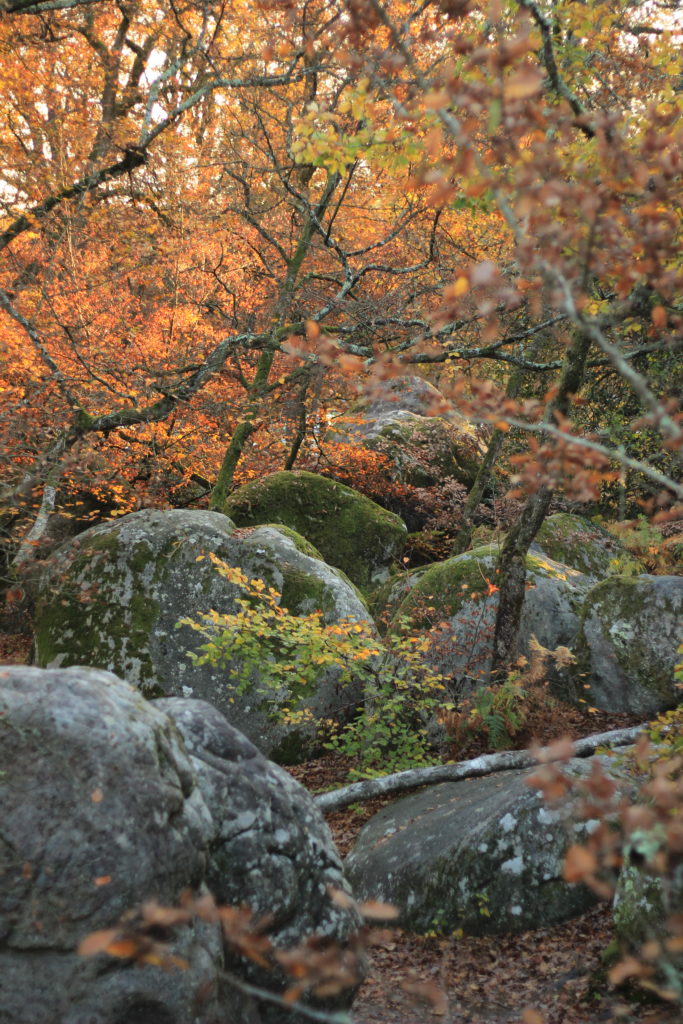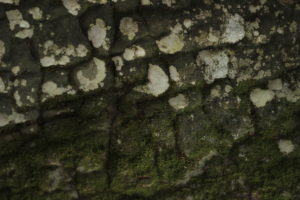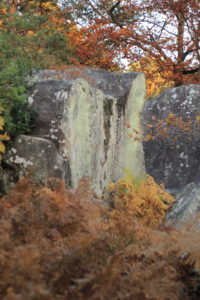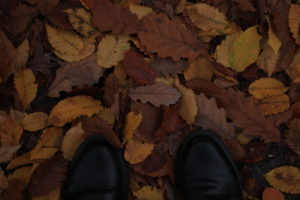




This week I traveled to France and found my phenology spot in the forests of Fontainebleau. The forest makeup was different from that of Vermont, making it interesting for me to explore, yet challenging to read the species and know the history of the land.
I was in France visiting family and spent some time in Fontainebleau. The forests were old hunting grounds for the kings up until the mid 1800s and then sectioned off as a nature preserve. This land holds deep history. Currently, the land is used for recreation; walking paths and some of the best bouldering in the world. These forests bring many visitors and tourists to rock climb or enjoy the amazing landscape that is famous in many nineteenth century paintings. Today, the bright orange and yellow leaves, large boulders, and open overstory were the main characteristics of this site. The trees are mainly deciduous trees along with few holly trees. There isn’t much of an understory in the plot that I explored, but there are some low bushes and grasses around. The canopy is about 40% cover, yet the leaves are falling, making the canopy look thinner. Growing on my site was a lot of oak trees, although not the ones that we studies in class, and European beech trees. At this time of the year the trees are displaying their bright orange and yellow pigments as the season changes to winter. While visiting the the forests I say lots of red squirrels and a some type of wild mountain cat. I also saw evidence of woodpeckers from holes in the trees. I would suspect there to be lots of live in this forest because of the secluded and healthy land. The bedrock is marine deposit and the large boulders are evidence of glaciers moving though the land and leaving behind large boulders. I chose this plot because I was spending time climbing the the forest and fell in love with the land and what is has to offer. Learning the history and exploring the land was really fun to do.
Fontainebleau is over 3,000 miles from Burlington Vermont. My site in Burlington is a pine stand, with large old pines and it used to be a farm. Evidence from tree scaring, barbed wire, and new growth shows that is used to be a farm. In Fontainebleau, the land was once used for hunting land but as far as I’ve researched, it was never farm or inhabited land. Since the mid 19th century, the land has been saved to from any development, and preserved as natural land. Currently in Fontainebleau, there are hundreds of walking paths and it is known as one of the best rock climbing bouldering area in the world. It brings lots of climbers like myself to try out the famous climbs. My plot in Burlington has gone in and out of natural land; staring as natural land, moving to farmland, then recreation for the University of Vermont, and now preserved land. There are also walking paths in Centennial woods but does not see as much traffic. The species that live in both plots are not drastically different or opposites, but there are not many that overlap. In Fontainebleau there are a lot of beech trees and oak trees, plus the occasional understory of holly, ferns, or tall grasses. My plot in Vermont has mostly pines with some beech trees and lots of ferns. The biggest difference what the progression in season. In Vermont the leaves had their peak colors over three weeks ago, but in Fontainebleau the peak colors are in display now. There are still leaves on the trees and the weather is warmer than Vermont with less rain. Most of the deciduous trees in my Vermont phenology site have already dropped and the ferns have shriveled up for the winter and have been crushed by snow.
https://drive.google.com/open?id=1K1dDgIENOBgmph-RTUkAM-u69saoH4rw&usp=sharing
